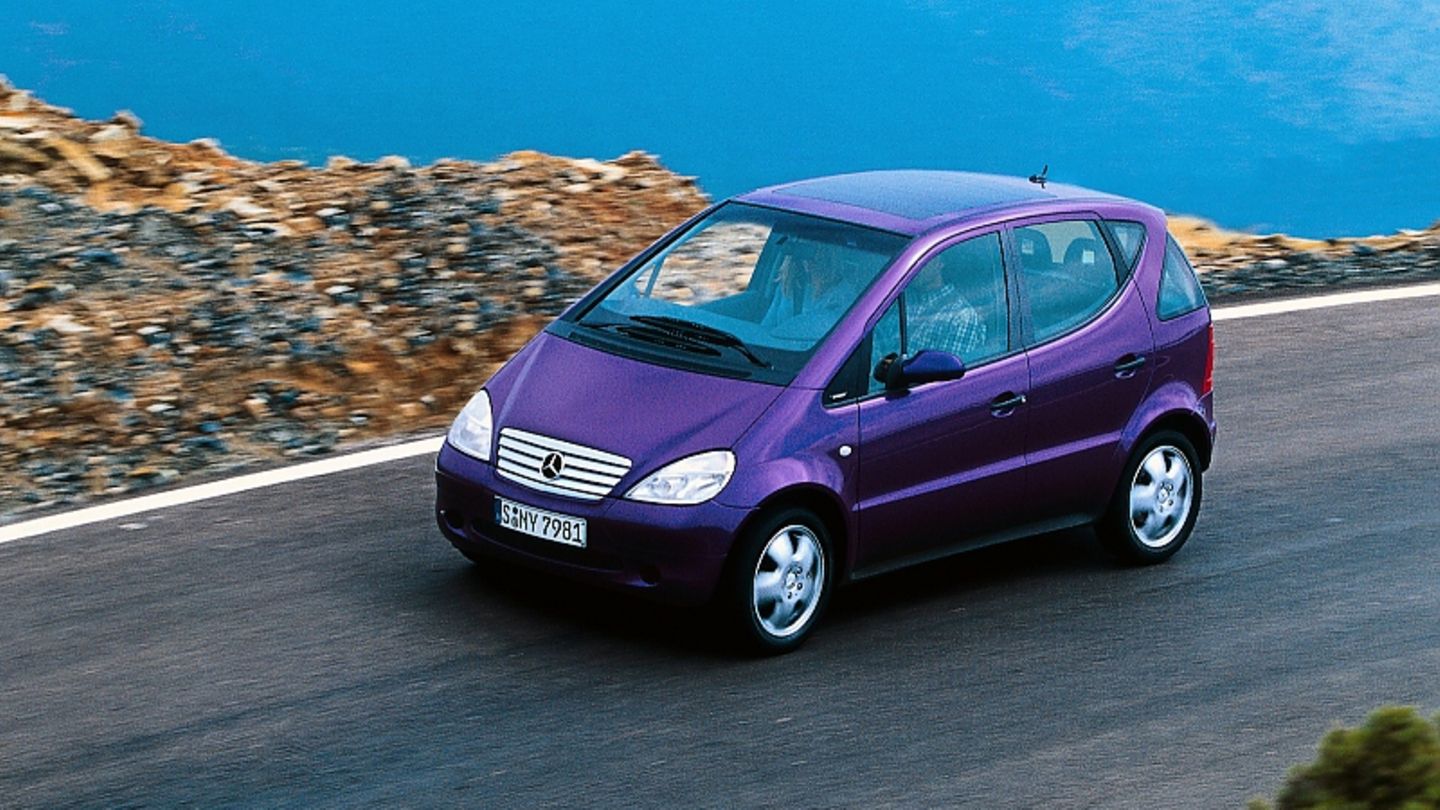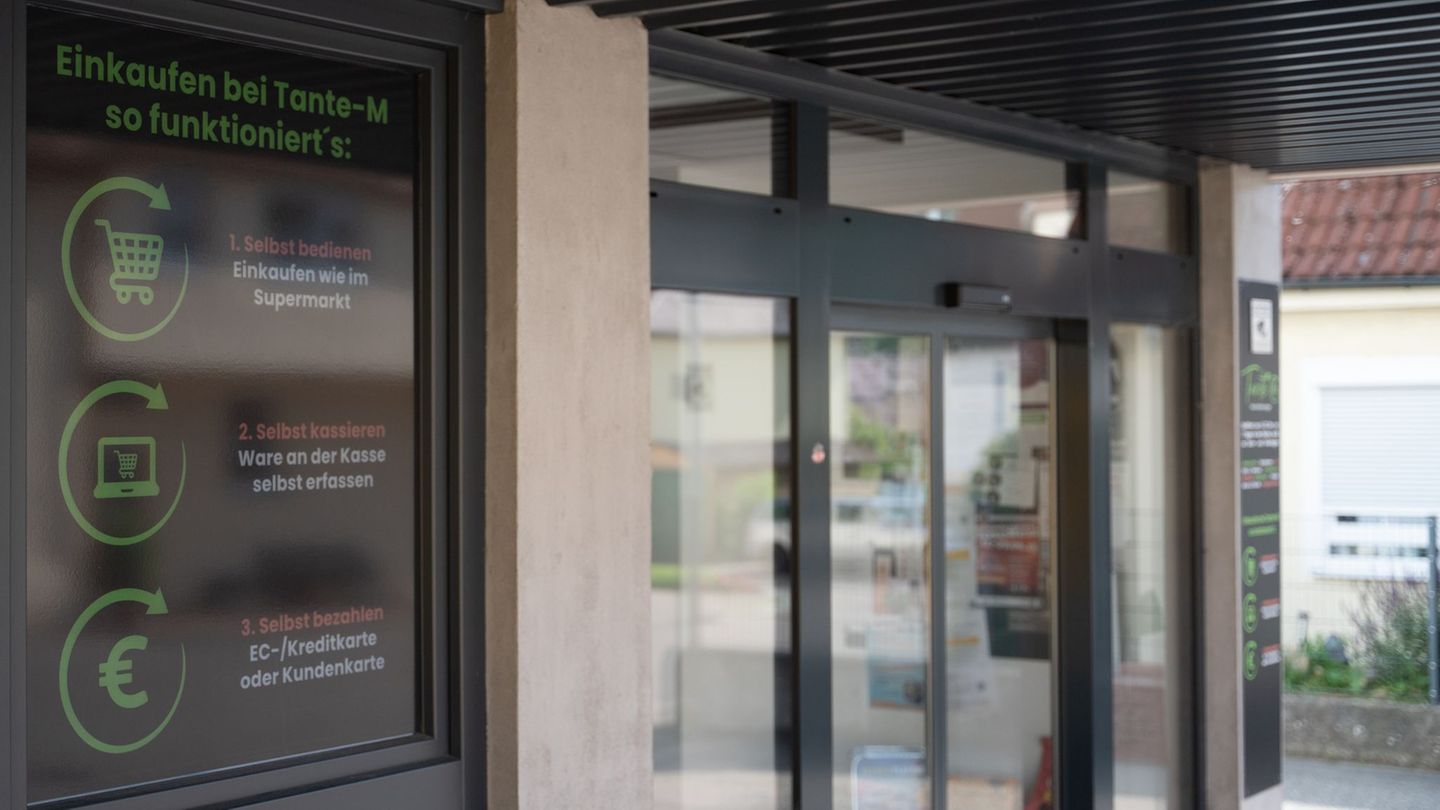No other Mercedes has caused as much discussion as the A-Class over the past 50 years. With the small Benz, the Swabians wanted to expand their product portfolio downwards and win completely new customers. It worked, but the first A-Class in particular couldn’t just shine. And the planned electric version never makes it into series production.
A Baby Benz had already caused a stir in the early 1980s. With the 190 of the W 201 series, Daimler climbed down a league and wanted to attract customers below the upper class. The Mercedes 190 was unfairly mocked as a baby Benz, but the A-Class of the W 168 series was the real up-and-coming star, because the little star had hardly anything to do with everything that was known from Mercedes. Design, drive, vehicle class and unfortunately also value and durability – everything was new and most of it was not at the well-known Daimler level. Nevertheless, more than 1.1 million vehicles of the first generation were sold between 197 and 2005 – preferably to customers who probably would not have afforded a Mercedes otherwise.
As early as 1993, Mercedes gave a preview of a vehicle class that was completely new for the Swabians with the near-series study of the A 93. Nothing fundamental changed until the market launch four years later and so Mercedes had a new entry-level model and called it the “A-Class”. With the entry-level model, the up-and-coming global corporation wanted to herald a new era. New clientele and a new compact vehicle class, where Volkswagen presented itself more elegantly and elegantly than ever with the fourth-generation Golf. Daimler wanted to cut a large piece of this tasty cake. Some of the customers should opt for the Smart Fortwo as the real implementation of the Smart Car. Under the Stars and Stripes there was the Mercedes A-Class – a star like no other before him.
The study of the Mercedes A 93 caused a stir at the International Motor Show in Frankfurt in autumn 1993. Such a compact Benz, more of a compact van than what was previously known in sedan design from Swabia – that was a paradigm shift. Up until the official premiere in 1997 at the Geneva Motor Show, there were hardly any fundamental changes, because the concept of the 3.35 meter long city mobile was set. The high structure for maximum practicality, a long wheelbase and the steeply rising side line are striking. Compared to the study of the A 93, the production model of the A-Class has grown by almost 23 centimeters and measures 3.58 meters in the normal version that was only available at first.
The new A-Class is not only the first production passenger car from Mercedes with front-wheel drive, but also sets new standards, particularly in terms of packaging. Its sandwich concept with a double floor, in which the engine can dive away in the event of a frontal impact and at the same time offers space for innovative drive concepts, is technologically a show and a patent with the construction number DE 44 44 00 132 C1. Despite the innovative safety concept, the A-Class drew attention to itself in autumn 1997 with a completely different event. A previously nameless Scandinavian journalist overturned the A-Class during a special evasion test, making the so-called elk test even better known overnight than the A-Class itself. Daimler reacted and equipped all 18,000 vehicles sold and the new vehicles in the series with the ESP electronic stability program as standard and the automatic brake assistant. In addition, there was a tighter spring-damper set-up, supplemented by a lowering of the body and tires in size 195/50 R 15 instead of the original size 175/65 R 15. All 18,000 vehicles already delivered were converted free of charge for customers and ESP is being upgraded Night to symbolize a modern safety system in the car.
Because of the double underbody, the occupants of the A-Class sit comparatively high as in a compact van. This enables easy entry and a good overview, but makes the A-Class appear anything but dynamic. The A-Class offers a unique amount of space in its class. The rear bench seat can be moved or removed and the front passenger seat can be removed in just a few simple steps. In total, more than 70 different seat arrangements are possible in a small space. A level load compartment floor and a large tailgate in conjunction with a low loading sill make it easier to load and unload this A-Class with the character of a minivan. The optional sunroof with slats gives the customer a lot of air and light – and a lot of trouble for Daimler because the workmanship is just as bad as the premium claim of the A-Class inside, which lags far behind the class leader VW Golf and has little in common with the well-known Daimler premium claim Has. For the first time in a large series from Mercedes-Benz, the front fenders are made of plastic, as is the tailgate. The vehicle weight is only 1,000 kilograms. The A-Class presented in Geneva in 2001 offers even more interior space and flexibility with a 17 centimeter longer wheelbase and legroom than in the S-Class.
The sandwich principle of the underbody and the compact vehicle, which is not even 3.60 meters long, require the construction of a new generation of four-cylinder engines. Initially, the two petrol engines from the M 166 series were offered in the A 140 and A 160 models. The CDI diesel engines of the OM 668 series follow in 1998. With fuel consumption of less than five liters per 100 kilometers, the Mercedes A 160 CDI and A 170 CDI diesel models are particularly economical. These turbo diesel engines are among the first to feature common rail technology developed by Mercedes together with Bosch. The performance spectrum of the four engines initially ranges from 44 kW / 60 hp to 75 kW / 102 hp. It was not until 1999 that the A 190 with 82 kW / 125 hp became the most powerful A-Class, before more dynamism entered the model range in 2002 with the Mercedes A 210 Evo with 103 kW / 140 hp. It reaches a top speed of 203 km/h and sprints from 0 to 100 km/h in 8.2 seconds. The electric A-Class with sodium-nickel chloride batteries housed in the sandwich floor, which has been planned since the start of the series, did not make it to series maturity.
There are a large number of first-generation A-Class vehicles on the used car market. Inexpensive models from the year 2000 with the 160 engine start at less than 3,000 euros. Well-equipped versions of the A 160 L with a long wheelbase cost little more. The high-torque diesels are almost not for sale because of the pollutant classification and a well-kept A 190 with less than 100,000 kilometers can still be had for well under 4,000 euros.
Source: Stern
I am a 24-year-old writer and journalist who has been working in the news industry for the past two years. I write primarily about market news, so if you’re looking for insights into what’s going on in the stock market or economic indicators, you’ve come to the right place. I also dabble in writing articles on lifestyle trends and pop culture news.




